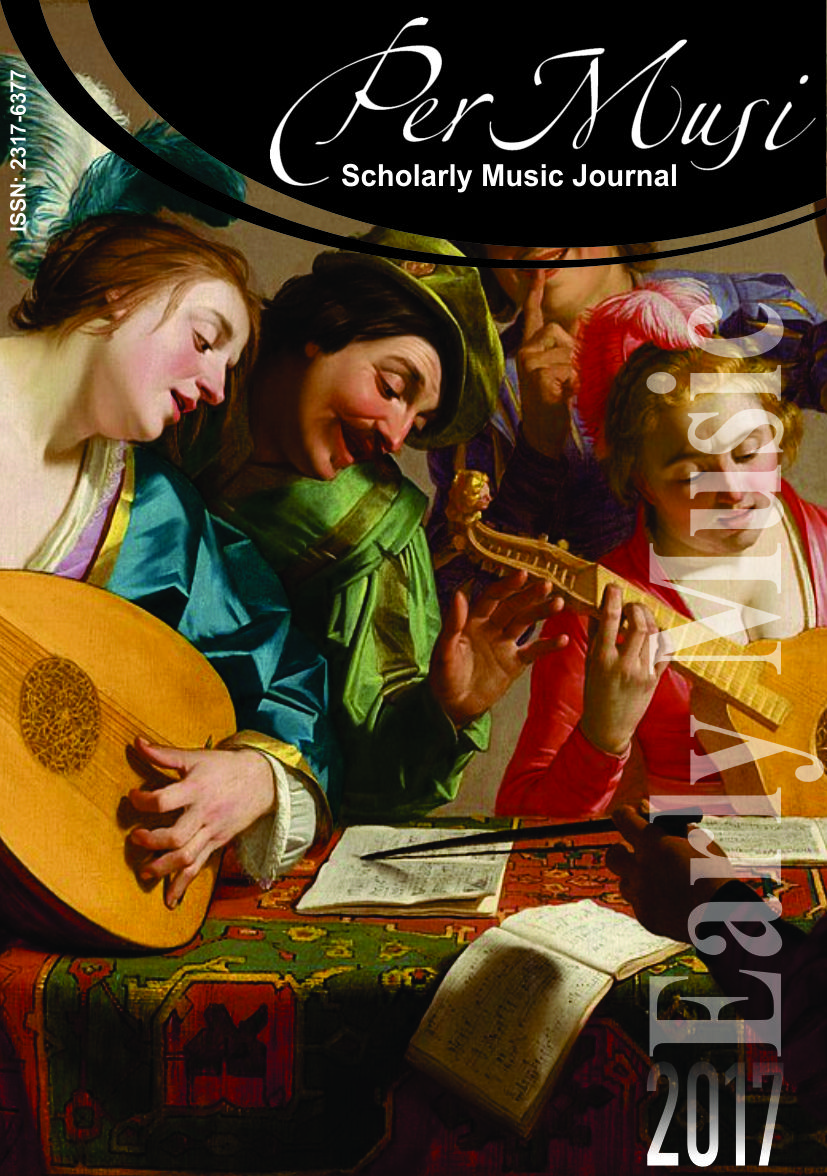Metamorphoses, allegory and mimesis in L'Orfeo by Claudio Monteverdi and Alessandro Striggio
Keywords:
musical mimesis, music of the seventeenth century and metamorphosis, Ovid and music, music and allegoryAbstract
This paper presents some thoughts about the construction of opera’s founding character, Orpheus, from the homonymous work from 1607, by Claudio Monteverdi and Alessandro Striggio. At the birth of the new Spectacle, Orpheus was chosen due to his allegorical potential, a fact in direct opposition to a mimetic theory based on Aristotle's Poetics. As an ingenious solution – which guaranteed the triumph of melodrama – Monteverdi and Striggio transform the Singer-poet into a Hero, endowing him with unprecedented individuality, mobile and flexible. The theory of Tragedy supports the creation of dramma per musica, whereas the theme of Ovidian’s transformations seduces the new music composers, bringing the models and necessary tools for the representation of opposite emotions, capable of moving the listeners' souls.
Downloads
Published
Issue
Section
License

Except where otherwise noted, contents on this site are licensed under a Creative Commons - Atribuição 4.0 Internacional.


